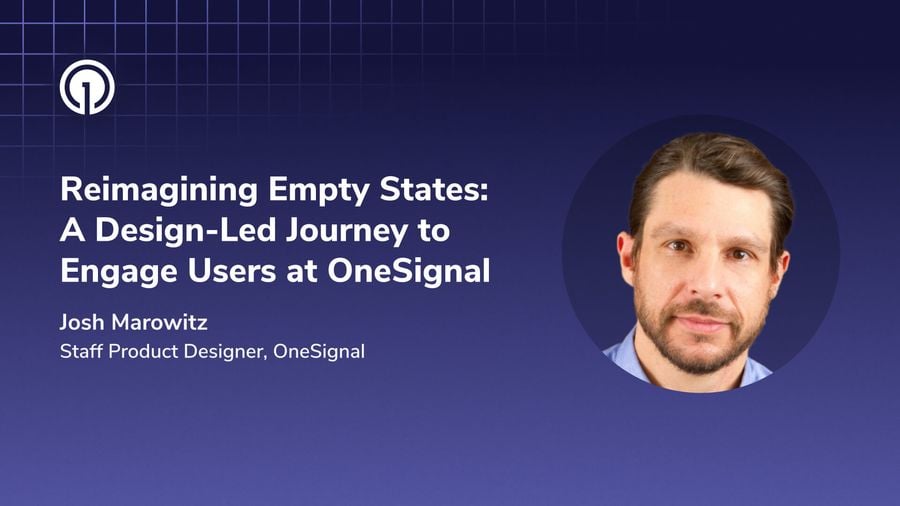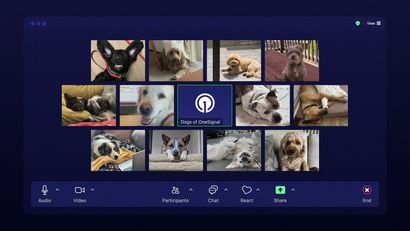Empty states, also known as zero states, might seem like simple placeholders, but they are powerful touchpoints in the user experience. At OneSignal, we recognized the untapped potential of these moments to guide users, communicate value, and foster engagement. Our journey to elevate empty states into purposeful, engaging elements was a design-led initiative from the start — spanning strategy, research, and cross-functional collaboration across product design, visual design, and design engineering.
Design as the Driving Force
Our design team led the initiative to reimagine empty states, anchoring the project in user-centered principles. We set out to create empty states that would not only display relevant information but also actively encourage user engagement with our features. By putting design at the forefront, we ensured that our approach was holistic and meticulously aligned with OneSignal’s vision for intuitive and valuable user interactions.
Understanding the Opportunity Through Research and Testing
To ensure our strategy was on target, we began with extensive research and testing with live users. These sessions revealed opportunities for our empty states to convey feature benefits better and provide clearer guidance for users. User insights from these tests provided a foundation for a more refined approach that would use empty states as an opportunity to welcome, orient, and encourage users to take meaningful actions within the product.
Conducting an In-Depth Audit and Benchmarking Best Practices
With our design strategy clear, we conducted a thorough audit of OneSignal’s empty states across various features, assessing consistency in design, functionality, and messaging. We also studied best practices from industry leaders to understand innovative approaches and effective patterns. This competitive research guided us in refining our approach, aligning our empty states with industry best practices.
Cross-Functional Design Collaboration
Our redesign was a cross-disciplinary effort, with product designers, visual designers, and design engineers working together to bring the empty states to life. Product marketing contributed to the messaging, ensuring that each empty state clearly communicated the value of the feature, while design engineers implemented the functionality to make these states interactive and dynamic. By collaborating across teams, we crafted an experience that was not only visually appealing but also informative and actionable, setting users up for success from the moment they encountered an empty state.
A Phased Approach to Enhance User Engagement
We rolled out the redesigned empty states in phases, ensuring that each phase enhanced the user journey in meaningful ways.
- Phase 1: The First-Time Experience
In the initial phase, empty states introduce new users to each feature, clearly communicating its value. Supported by compelling visuals, these empty states encourage users to take the first step, such as setting up a feature or engaging with a new channel. - Phase 2: Encouraging Deeper Interaction
Once users have engaged with a feature, a secondary empty state reinforces their progress, celebrating their achievements and guiding them toward the next step, like sending their first message. This phased approach drives users toward continued engagement, building momentum over time.


A Framework for Feature Adoption and Engagement
The redesigned empty states now serve as more than informational elements; they are critical touchpoints that drive feature adoption and engagement across OneSignal. By creating a consistent experience that actively communicates the value of each feature, we encourage users to explore the platform more fully and make the most of OneSignal’s capabilities.


Key Takeaways
This design-led initiative underscores the importance of seeing empty states as opportunities to enhance user experience. With thoughtful design, backed by user insights and cross-functional collaboration, we transformed OneSignal’s empty states into strategic touchpoints that support feature discovery and encourage meaningful action. As we continue to monitor key performance metrics, our goal remains to align user intentions with actions, maximizing engagement and helping users experience the full value of OneSignal.
Join our Team!
We're hiring! Learn more about our values and check out our current job openings below.
Check Out OneSignal Job Openings



